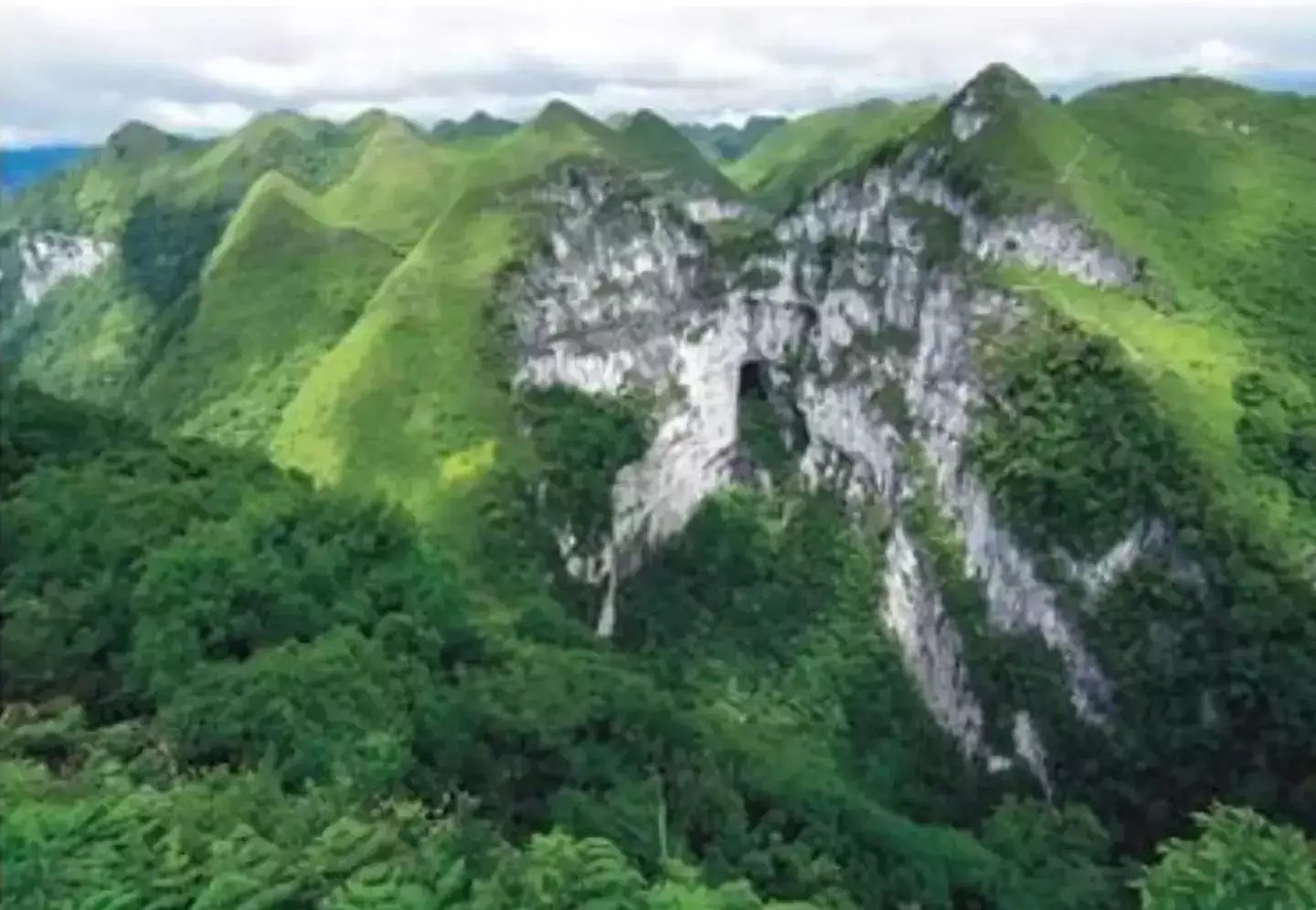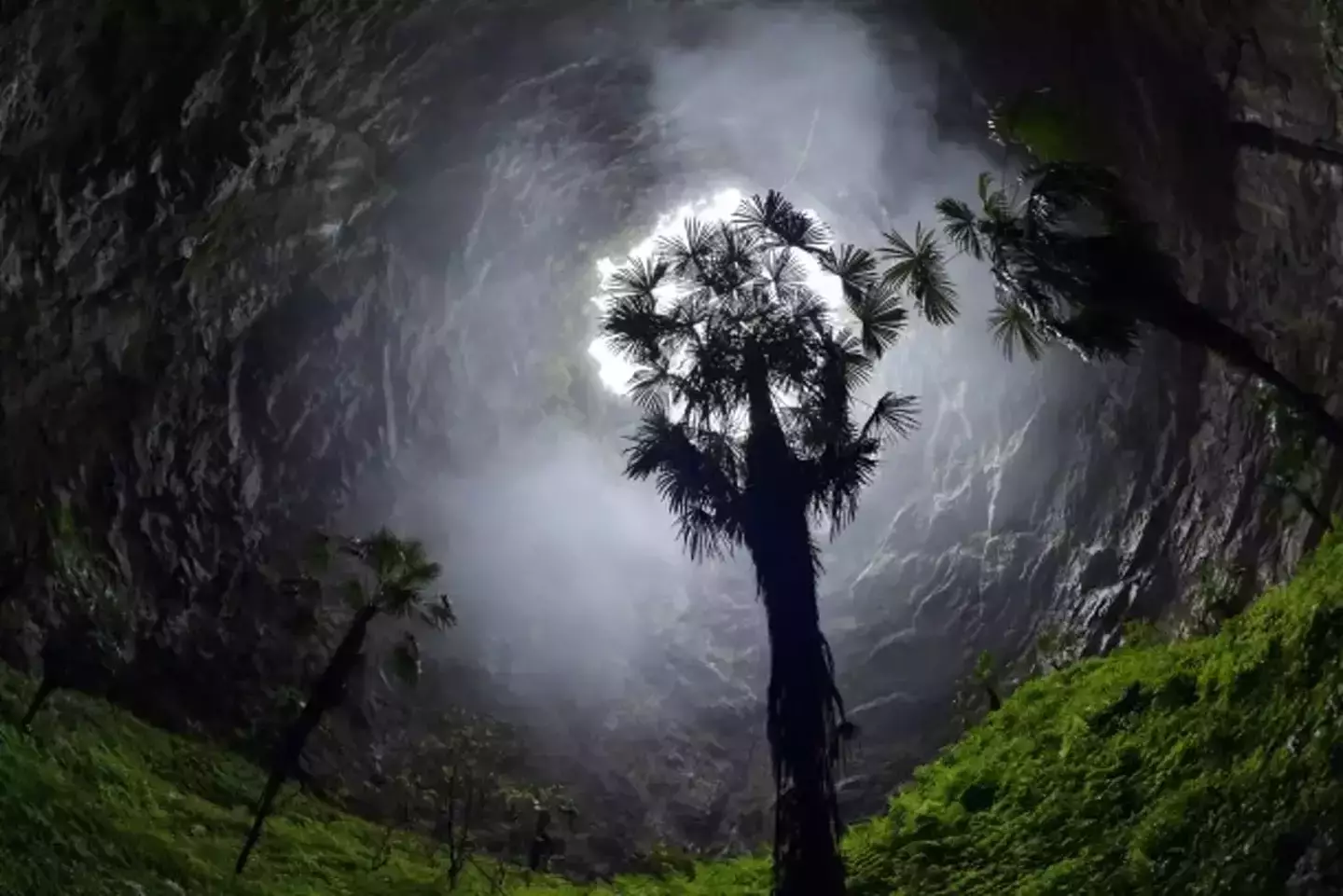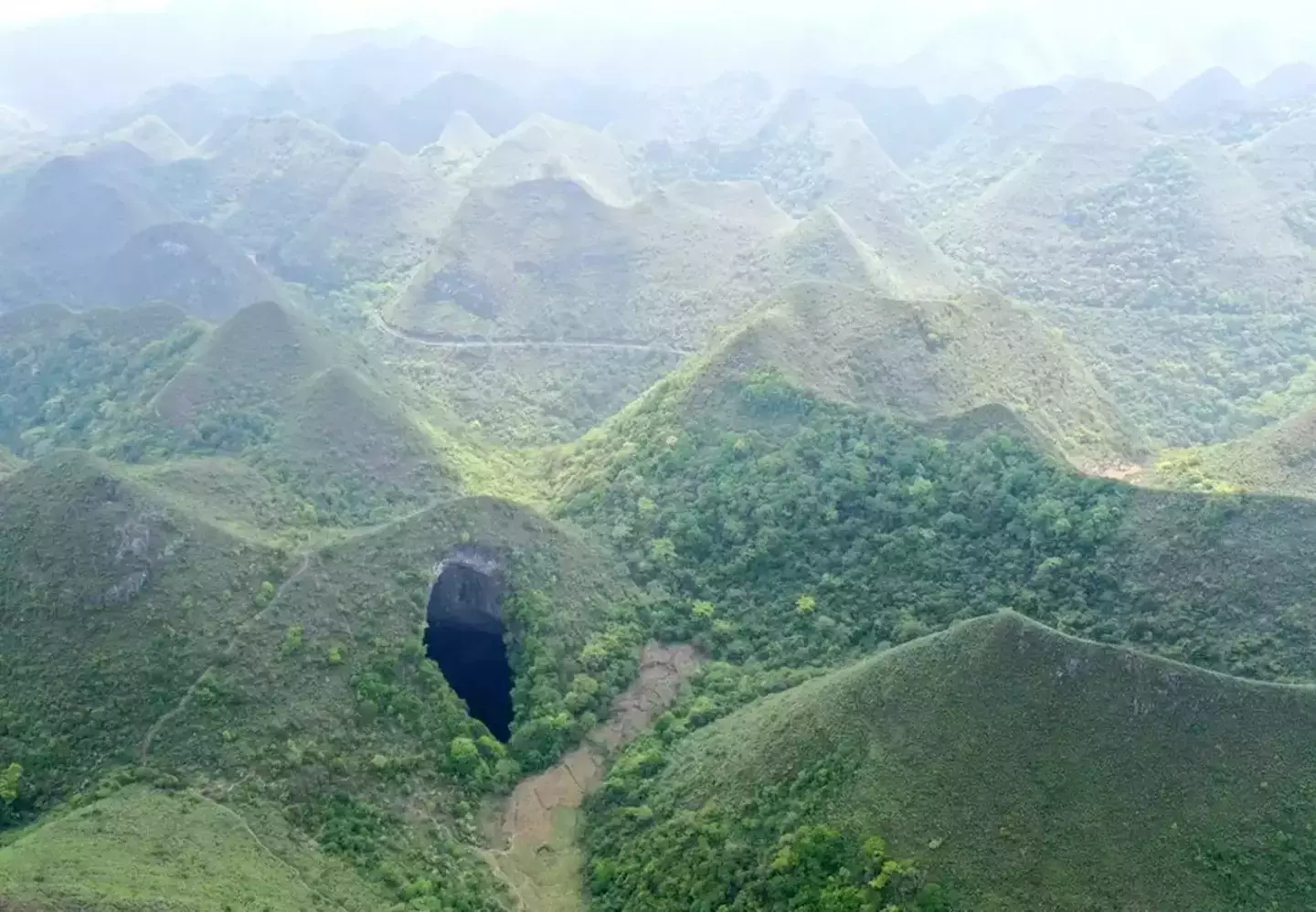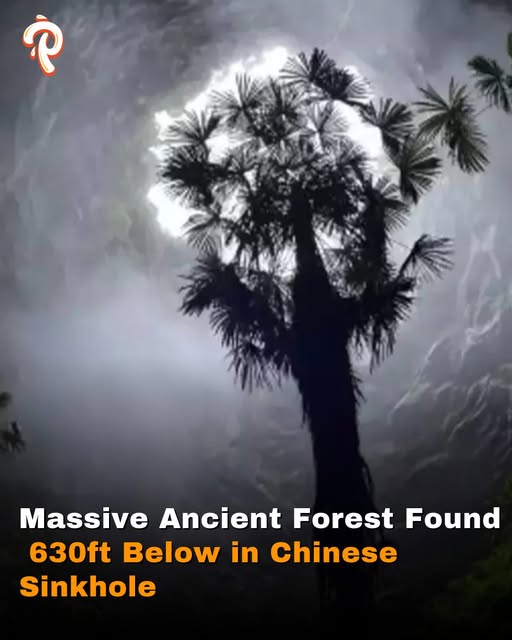Did you know that in Asia, there exists a sinkhole that shelters a lush, ancient forest with trees reaching nearly 130 feet in height?
In Southwestern China, scientists discovered two years ago that a massive sinkhole in the Leye-Fengshan Global Geopark of the Guangxi Zhuang Autonomous Region is brimming with life.
This depression is part of a UNESCO site and was reported by Zhang Yuanhai, a senior engineer at the Institute of Karst Geology, to be over 1,000 feet long, 490 feet wide, and nearly 630 feet deep.
Yuanhai further stated that the area contained ‘a well-preserved primitive forest at the bottom’ along with three cave entrances.
Researchers are particularly excited, as they speculate there could be undiscovered plant and animal species residing within.

UNESCO described the region: “The UNESCO Global Geopark is primarily sedimentary with more than 60 percent of 3000m thick Devonian to Permian carbonate rocks.
“It forms an ‘S’-shaped structure and a rhombus configuration in the karst areas of Leye and Fengshan counties respectively, which controlled two large subterranean rivers’ development, the Bailang and Poyue.”
The formation of the Buliuhe River is attributed to the interaction between these two rivers, and several ‘karst geosites’ emerged as a result.
A karst landscape, where dissolving bedrock creates sinkholes, is shaped by erosion both above and below ground.
Features of the Leye-Fengshan Global Geopark include karst springs, karst windows (tiankengs), natural bridges, and expansive cave systems.
In a conversation with Live Science, Chen Lixin, leader of the sinkhole expedition, expressed: “I wouldn’t be surprised to know that there are species found in these caves that have never been reported or described by science until now.”
He mentioned that some trees in the ancient forest are close to 130 feet in height.

George Veni, executive director of the National Cave and Karst Research Institute, explained to the publication the variability of karsts: differences in geology, climate, and other factors can lead to vastly different karst formations worldwide.
“In China, you have this incredibly visually spectacular karst with enormous sinkholes and giant cave entrances and so forth,” he noted. “In other parts of the world you walk out on the karst and you really don’t notice anything. Sinkholes might be quite subdued, only a meter or two in diameter.
“Cave entrances might be very small, so you have to squeeze your way into them.”
According to Veni, southern China is abundant in karst topography, which makes it particularly prone to the formation of deep sinkholes and explore-worthy caves.
He explained that the dissolution of bedrock in these landscapes often begins with slightly acidic rainwater.
As rainwater absorbs carbon dioxide and trickles through the soil, it becomes more acidic, eventually carving tunnels and voids in the bedrock.

When a chamber within the rock becomes expansive enough, its ceiling may collapse, creating a large sinkhole.
Though the Geopark sinkhole was the 30th found in the area, it is not the largest.
The title of the world’s biggest sinkhole goes to the Xiaozhai Tiankeng, which boasts a volume of 130 million cubic meters.
Known as ‘The Heavenly Pit,’ this natural marvel supports over 1200 plant and animal species.
The sinkhole spans 2,100 feet in depth, 2,000 feet in length, and is 1,760 feet wide, complete with a waterfall within its depths.
Quite a spectacular sight, wouldn’t you agree?
